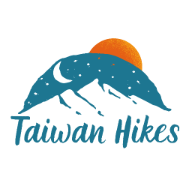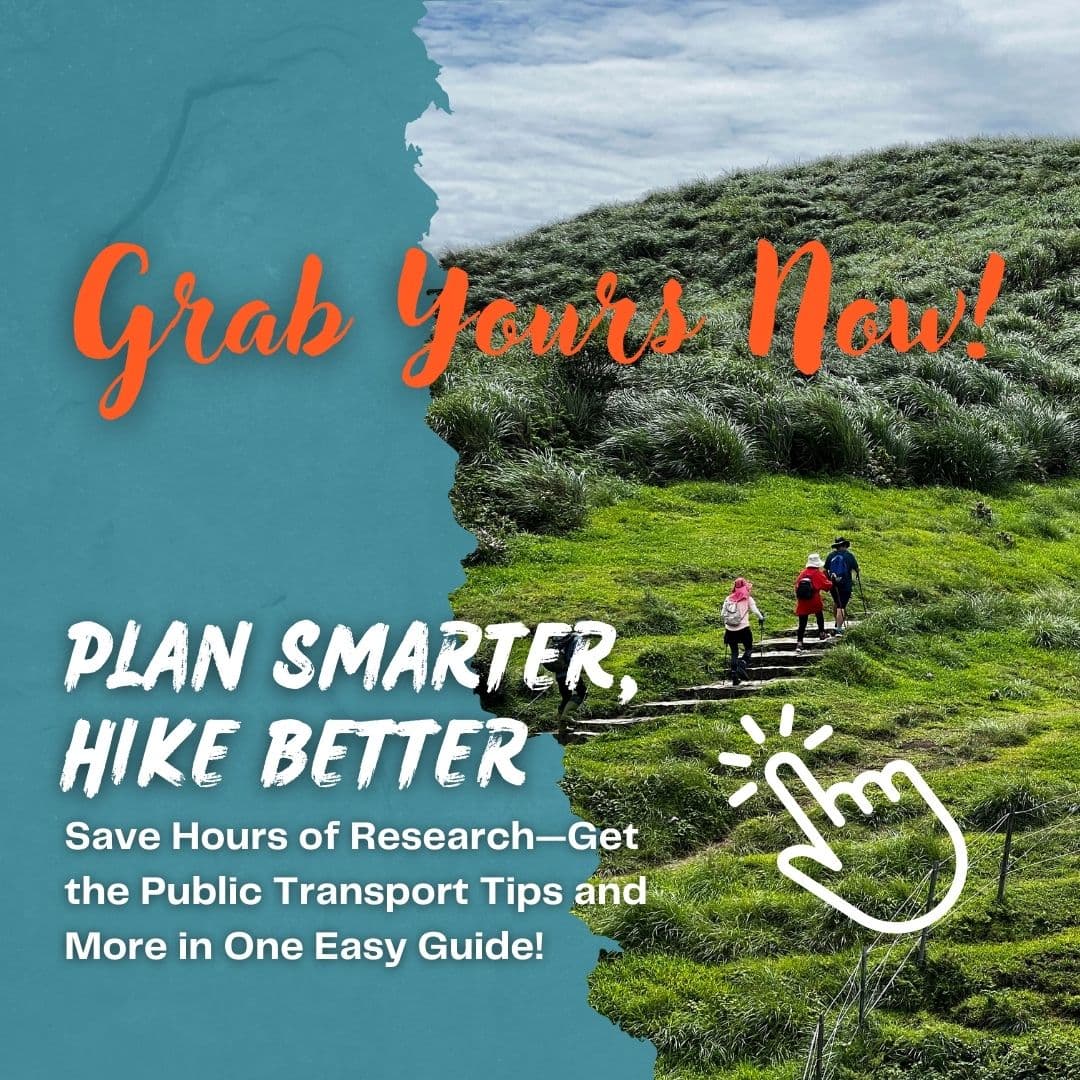Zhenxibao Cypress Trail: Majestic Route A, Poison Dragon Pond, and Relaxing Route B
Hiking the Zhenxibao Cypress Trail, also known as Cinsbu or Jinsbu, offers a journey through towering ancient trees and the heritage of the Atayal people. Whether you're looking for a gentle stroll or a slightly more challenging adventure to Dulong Pond (Poison Dragon Pond), this trail has something for everyone.
Whether a casual hiker or a seasoned trekker, Zhenxibao offers an experience as unique as it is unforgettable. Zhenxibao is close to the famous Smangus. Moreover, you can arrange a two-day trip to enjoy Zhenxibao and Smangus, which is not far away from there, and immerse yourself in the tranquility that fills the forest air.
Disclaimer:
All content is for inspiration only. Use Taiwan Hikes' suggestions at your own risk. We are not responsible for any losses, injuries, or damages.
Taiwan Hikes may include affiliate links. When you purchase through these links, you support our ability to continue providing FREE content — at no additional cost to you.
All content is for inspiration only. Use Taiwan Hikes' suggestions at your own risk. We are not responsible for any losses, injuries, or damages.
Taiwan Hikes may include affiliate links. When you purchase through these links, you support our ability to continue providing FREE content — at no additional cost to you.
Table of Contents:
- Trail Information: Zhenxibao Cypress Trail 鎮西堡巨木群步道
- Maps, Transportation, and Accommodation of Zhenxibao/Cinsbu
- Details of This Hike: Zhenxibao Cypress Trail Route A (to Poison Dragon, Dulong, Pond/Swamp 毒龍潭) and Route B
- About Zhenxibao (Cinsbu or Jinsbu) and Stories Behind the Giant Trees
- The Checklists You Need to Hike Yushan and Other High Mountains
- Related Posts
Trail Information: Zhenxibao Cypress Trail 鎮西堡巨木群步道
Trail Name: Zhenxibao Cypress Trail 鎮西堡巨木群步道
Distance: 11 km (7 miles), including Route A and Route B
Route type: Out and back
Days/Hours Needed: 7-8 hours if you do both routes
Total Ascent/Descent: 1,092m/ 1,087m
Best Time to Go: All seasons
Permits: Not required
Difficulty Level: for Route B
for Route B
 for Route A to Poison Dragon Pond
for Route A to Poison Dragon Pond
Distance: 11 km (7 miles), including Route A and Route B
Route type: Out and back
Days/Hours Needed: 7-8 hours if you do both routes
Total Ascent/Descent: 1,092m/ 1,087m
Best Time to Go: All seasons
Permits: Not required
Difficulty Level:
 for Route B
for Route B
 for Route A to Poison Dragon Pond
for Route A to Poison Dragon Pond
Peaks or Places to Reach
- Poison Dragon Pond or Shenmu Pond 神木池 at 2,375 meters above sea level.
Maps, Transportation, and Accommodation of Zhenxibao/Cinsbu
GPX Track From My Hike
Click Menu in the map to download, print, or share the map.
You can see more options after clicking the Play button.
Click to change the speed to meet your condition.
to change the speed to meet your condition.
You can see more options after clicking the Play button.
Click
 to change the speed to meet your condition.
to change the speed to meet your condition.
Transport and Accommodation:
Like Smangus, the trailhead is not accessible by public transport. You must drive or hire a private pickup.
The only bus to Zhenxibao (the Below Cinsbu Tribe Stop 下鎮西堡部落站) is Bus 107 from Neiwan Bridge 內灣大橋站 near Neiwan Train Station. The distance from the bus stop to the trailhead is 3.6 km (2.2 miles).
Another option is to book a two-day trip on KKday (affiliate link) to visit the Smangus and Zhenxibao trails.
Zhenxibao Cypress Trail: Majestic Route A, Poison Dragon Pond, and Relaxing Route B
06:18 We arrived at the trailhead and got ready to hike.
06:45 We reached the junction at 1 km.
07:05 We reached the junction with toilets and chairs. If you only want a relaxing walk, please turn to Route B.
Zhenxibao Cypress Trail Route A to Poison Dragon Swamp (or Dulong Pond) 毒龍潭
After the break, we started our journey to Poison Dragon Pond. What greeted us was a steep slope. We did this hike in late April, and the summer heat started creeping in.
07:47 We saw the red signs pointing toward the pond and the trailhead.
There were several big trees here. And more slopes to climb.
09:17 We arrived at Poison Dragon Pond at 2,375 meters above sea level.
At first, the sun was blocked by the clouds. Lucky for us, the wind pushed the clouds away, and we saw the sunlight cast magic on the pond.
After the break, we took the same way back to the junction. On the way back, I saw more giant trees that I didn't notice earlier.
11:05 We returned to the junction with toilets and had a 45-minute lunch break.
Zhenxibao Cypress Trail B Route
12:12 After the lunch break, we headed to the B Route. This route is much easier than A Route. You follow the steps to enjoy the giant trees.
Among those giant trees, two of the most famous ones are No. 13 Adam Tree 亞當神木 and No. 12 Eva Tree 夏娃神木 because of their appearance. Now, both trees are renamed as Halus 哈路斯 and Wal-mulai 人變鷹, respectively, to respect the Atayal culture.
Please see the About section for the story behind those trees.
14:07 We passed a sign about Zhenxibao Church, but we didn't have enough time to visit.
14:14 We returned to the junction with the toilets.
14:47 We returned to the trailhead and finished this hike.
Exploring Taiwan? Save Time with the Ultimate 2025 Hiking Guide! Discover the top hikes in every city and county across Taiwan—all accessible by public transport (bus links available). We've spent 50+ hours researching the best trails and transit options, so you can skip the hassle and start your adventure!
About Zhenxibao (Cinsbu or Jinsbu)
Meaning of Cinsbu
In Atayal, the Zhenxibao Settlement is called Cinsbu which means "The sun is already shining on the land while you're still deep in sleep in early morning and will continue to shine until evening comes. Day is warm and night is cold; this is a land where disease and pests are extinct, and crops grow well."
This land has nurtured the largest virgin Taiwan cypress forest in Taiwan, standing across the Takejin Creek from the Smangus Giant ancient trees. The forest extends eastward and connects with the Qilan virgin Taiwan cypress forest around Yuanyang Lake in Yilan. The giant trees were given names according to their shapes. The ones called Adam, Eve and Pregnant Mother are the most famous.
The Zhenxibao Cypress Trail area has two routes. Route A, developed earlier, is located on a plateau beneath Mount Jinaji and is also known as the Jinaji Sacred Trees area. This route is more challenging and less clearly marked, and it ends at Poison Dragon Pond, aka Dulong Pond 毒龍潭. Route B is gentler, with more visitors walking along it.
Stories behind the Giant Trees
No. 3 is Walm'yungay, means Human Transforms into a Monkey 人變猴子.
The Atayal people have a legend: A lazy young man who often sat on his hoe and tried to avoid work. One day, he slipped, causing the hoe to penetrate him in the rear painfully. Miraculously, he survived and grew fur, and the hoe's handle became a tail. Ashamed, he retreated to the mountains, transforming into a monkey. To this day, many Atayal refrain from eating or hunting monkeys, believing they are descendants of an ancestor. In the Atayal language, a monkey is called Yungay, meaning "one who transformed from a human."
Among those giant trees, two of the most famous ones are No. 13 Adam Tree 亞當神木 and No. 12 Eva Tree 夏娃神木 because of their appearance. Now, both trees are renamed Halus 哈路斯 and Wal-mkuali 人變鷹 respectively to respect the Atayal culture.
The Atayal people tell a tale where an eagle is the transformed form of a child. There are several versions, and conveying the original meaning is complex. You can listen to this beautiful song about this tale, Wal-mkuali.
One of the versions is a girl eagerly awaiting her father's return from hunting and asking her mother (the other version is her stepmother) for a beautiful dress to greet him. However, her mother keeps giving her more chores instead and another promise. Despite the girl completing each task, only to be assigned another.
Finally, overcome with sorrow and longing, she transforms into an eagle and flies away, crying, "Goodbye, Mother! I am leaving!" Her mother, filled with regret, can only watch as her daughter soars into the distance.
The Checklists You Need to Hike Yushan and Other High Mountains
What now after you receive your hiking permit to Yushan and other high mountains?
Here's the thorough checklist that saves you 3+ hours of Googling. With those checklists, you will know what to do for your hikes within 10 minutes:
- A schedule to apply for permits and arrange your transport, accommodation, and catering service
- What to do during your hike, and more
- Gear list suggestions
- Snow season and mountain regulations
- Weather, temperature, and typhoon warnings

























